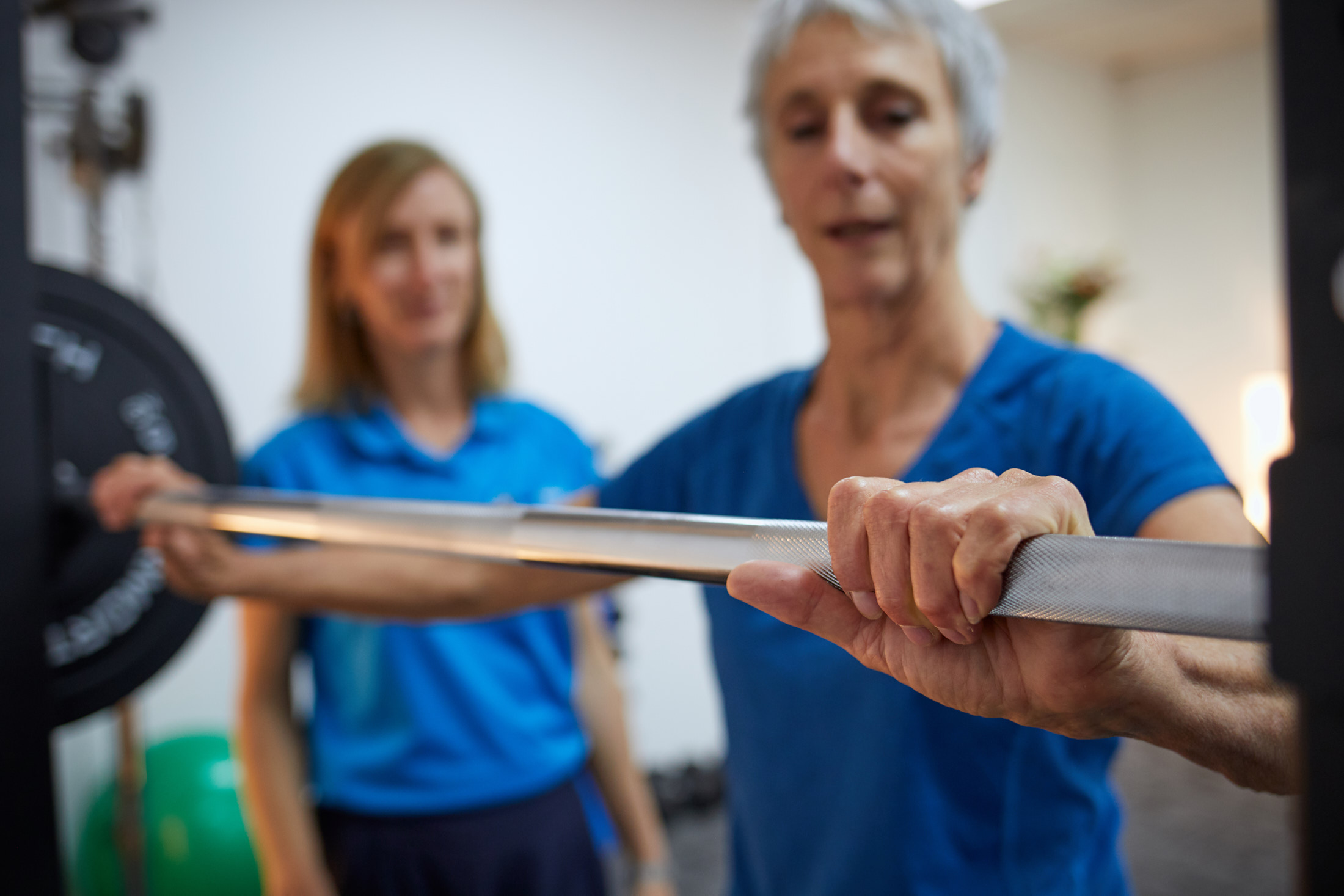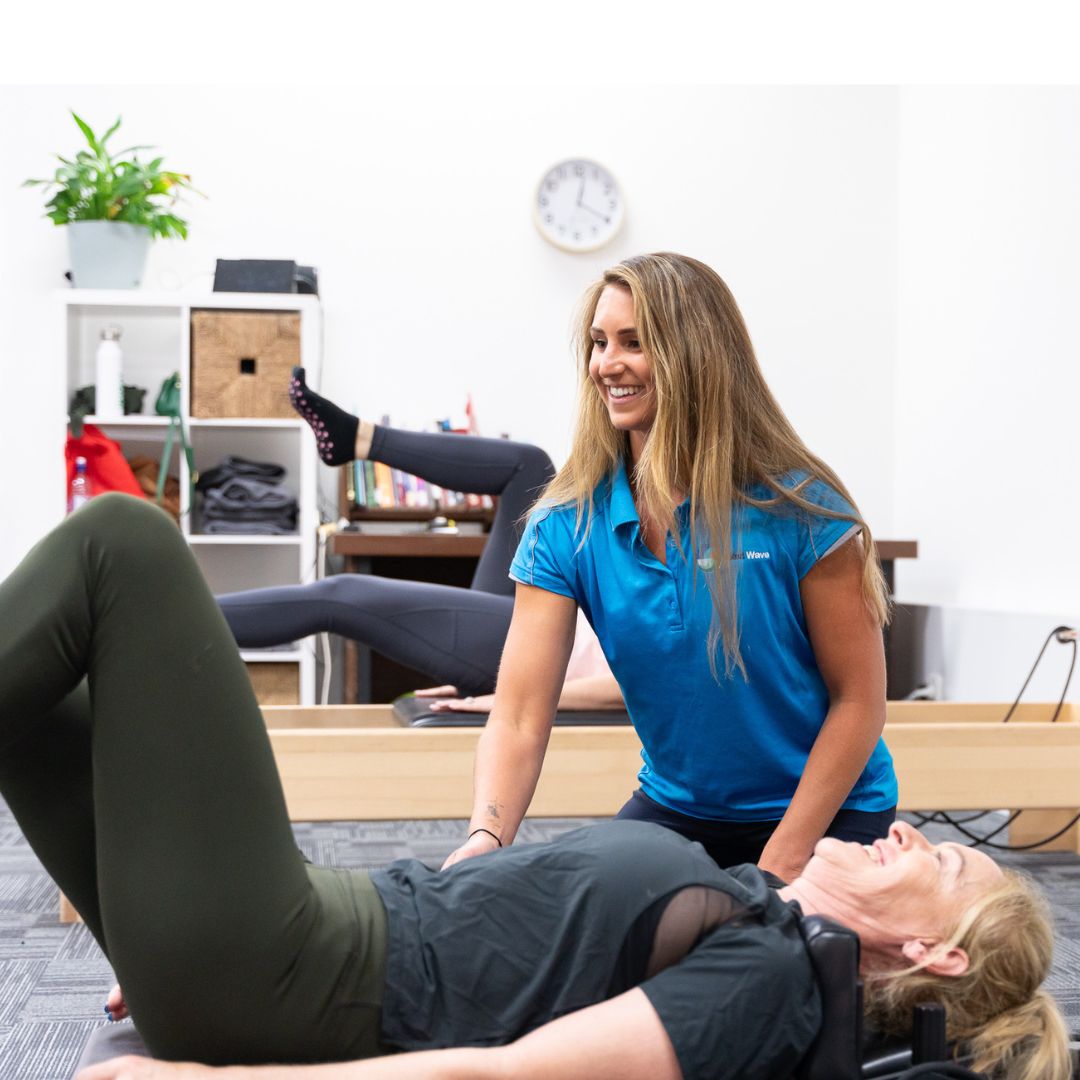Osteoporosis is a health concern for all women and men.
Affecting over 1 million people in Australia, osteoporosis is considered a ‘silent and progressive disease’ where there are often no symptoms until a bone fracture occurs. Once thought to be a natural part of ageing, it is now largely regarded as a preventable condition. This article describes ways you can prevent onset of osteoporosis and what treatment options are offered at Next Wave Therapy in Fremantle.
What is osteoporosis?
Osteoporosis literally means ‘porous bones’ and is a disease in which the density and quality of bone are reduced. As bones become more porous and fragile, the risk of fracture is greatly increased.
Osteoporosis is a systemic skeletal disease characterised by low bone mass and micro architectural deterioration of bone tissue, with a consequent increase in bone fragility and susceptibility to fracture. (AM J Med 1993; 94:646).
There typically are no symptoms in the early stages of bone loss. But once your bones have been weakened by osteoporosis, you are at high risk of bone fracture. Breaking a bone is the most serious complication of osteoporosis, and occurs mostly in the hip, spine or wrist, but other bones can break too. In addition to causing permanent pain, osteoporosis causes some patients to lose height.
Risk factors for osteoporosis
-
Risk factors that cannot be changed include, having a small build, Caucasian or Asian ethnic background, family history of osteoporosis, age and previous minimally traumatic fracture.
-
Risk factors that you can change include, low calcium intake, insufficient exercise, smoking, Vitamin D deficiency, weight (lean body mass) and high alcohol intake.
-
Risk factors that can be changed with medical or naturopathic help – interruption to the menstrual cycle, menopause, long term use of corticosteroids, rheumatoid arthritis, chronic liver and kidney disease, hyperparathyroidism or thyroxine excess, malabsorption disorders, inflammatory bowel diseases. Note, any changes to medication or medical treatment plans should only be made in consultation with your GP.
What causes osteoporosis?
Bones are continually being built by osteoblast cells and broken down by osteoclast cells. Calcium homeostasis and the balance between osteoblast (building bone) activity and osteoclast (breaking down) activity are affected by many factors. The most common factors contributing to osteoporosis are:
1. Hormonal changes
Woman are at greater risk of developing osteoporosis because of the decline in oestrogen levels in menopause. When oestrogen levels decrease, bones lose calcium and other minerals at a much faster rate. As a result a bone loss of approximately 2% per year occurs for several years after menopause.
Men also lose bone as they age, however testosterone levels in men decline more gradually so their bone mass remains adequate till later in life.
2. Impaired intake and absorption of calcium and vitamin D
Reduced intake of calcium and vitamin D intake can lead to an increase in age related bone loss.
Adults require 1,000 mg per day of calcium (preferably through diet) which increases to 1,300 mg per day for women over 50 and men over 70
Low vitamin D levels can result from a lack of sun exposure which can also lead to reduced absorption of calcium.
3. Decreased physical activity.
Reduced physical activity negatively impacts the way bone is stimulated to grow and remodel after injury. This is further explained by Wolff’s Law
4. Secondary osteoporosis
Secondary osteoporosis is when reduced bone mass is caused by other factors such as;
-
Endocrine or metabolic disorder – Anorexia nervosa, diabetes type 1 and 2, Hyperadrenalism, Hyperparpathyroidism and thyrotoxicosis
-
Unmet nutritional needs– calcium deficiency, vitamin D deficiency, vitamin A (retinol) toxicity & malabsorption
-
Drug use- Excess thyroid medication, corticosteroids (commonly used in asthma, rheumatoid arthritis and other inflammatory conditions) & heparin
-
Other – Ankylosing spondylitis, Crohn’s disease, rheumatoid arthritis, thalassemia, ulcerative colitis.
-
Low hormone levels – in women, early menopause; in men, low testosterone
-
Conditions leading to malabsorption – coeliac disease, inflammatory bowel disease
3 things you can do to prevent osteoporosis
-
Increase calcium intake from dairy foods (milk, cheese, yoghurt), green leafy vegetables, legumes (soya beans, tofu) and nuts. Fish especially where you eat the bones, such as sardines and pilchards is also a very good source of calcium.
-
Exercise 30-60 minutes 3 times a week
-
Increase intake of vitamin D rich foods and Sunlight exposure. Get early morning (before 10am) and late afternoon (after 3pm) sunshine for 20 minutes, three times a week for at least five months of year. This is especially important for people who follow vegetarian or vegan diet.
-
Prepare for menopause and hormonal changes that occur with age.
-
Address any health concerns listed as secondary causes of osteoporosis.
How can Next Wave Therapy help?
Naturopathy
Our Naturopaths can assess risk factors and treat many of the underlying conditions contributing to osteoarthritis. They interpret blood chemistry results completed by your GP in a way that can help to identify subclinical presentations meaning prevention and/or treatment is targeted for your individual needs. Next Wave naturopaths use high quality evidence based nutritional supplementation, diet advice and herbal medicine.
Addressing underlying conditions, Next Wave naturopaths have a special interest in treating thyroid disorders, adrenal stress, digestive complaints leading to malabsorption and the needs of women in menopause. They can help people to lose weight (fat), manage stress, make changes to their diet and reduce alcohol consumption.
Physiotherapy
Establishing an exercise program can be a challenge. People start with the best of intentions but get injured, aren’t sure which exercises to do, or lose motivation to maintain their regime. Next Wave physiotherapist’s help you establish a suitable exercise program. Weight bearing and/or resistance exercise such as walking, dancing or cycling at least three times a week is ideal.
In sedentary post menopausal women, bone mineral content of lumbar vertebrae improved by5.2% after 9 months of exercise for 50-60 minutes 3 times a week, compared with control non-exercise group lost 1.4%. The Journal of Family Practice, 1989; 29:410-15
However, using weights or doing resistance exercise is sometimes challenging or not possible, especially for those people with significantly reduced mobility, pain and/or weakness. Isometric exercises can also beneficial for muscle and bone strengthening. This is after all how NASA astronauts maintain strength while in space.
Next Wave physiotherapists work with you to firstly identify your preferred type of exercise, fully assess your musculoskeletal presentation and then devise an exercise rehabilitation program to meet your needs and goals. Our physiotherapists offer a range of manual therapy and exercise rehabilitation options. They closely supervise you while rehabilitate to optimal functional fitness and provide ongoing support while you transition this exercise into your everyday life.
Occupational Therapy
Managing a progressive illness can be stressful and can impact a persons occupations, whether daily living activities, work, leisure or selfcare. Next Wave occupational therapists provide Pilates, falls prevention, stress management and education on how to manage persistent pain. They offer home visits and functional assessments to help you do the things you need, want or are expected to do in your daily life.
Please contact Next Wave Therapy for any further information.






